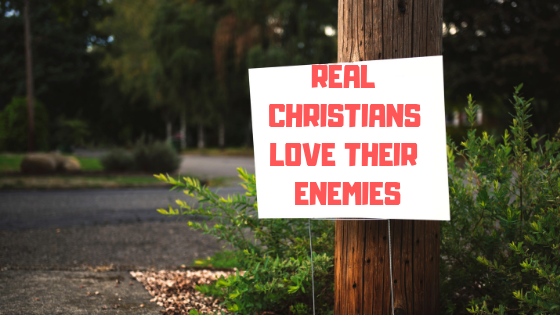Buildings and Bushes Aflame
As the spires of Notre Dame went up in flames yesterday, several of my friends posted images of their memories there, from recent or long-gone trips to see the historic edifice built with such high intentions of bringing honor to God. Such a massive relic of history reaches deep and wide across our earth’s inhabitants.
It’s deeply saddening to watch such a work become destroyed. Beyond the religious implications, the building inhabited art and history in a way that can only be experienced, rather than described. The fact that so many take pictures in front of it but rarely describe it speaks to this idea. It’s a window into the soul of our collective past, a way of understanding the lives, beliefs, priorities and skills of our ancestors, which gives us a framework of understanding our own place in the world.
Ken Follett and I were on a similar timetable around 2008, because he managed to publish each volume of his historical series as I was ready to birth another baby. The night I labored for my first, I made a huge dent in The Pillars of the Earth, and managed to finish it while spending endless hours nursing in the following weeks. Each consecutive baby had their own massive novel (I had to move on to the Trilogy series before returning to the final installment of the Kingsbridge series this past fall). The early series focused on the process of building a massive cathedral in early England, amid monks and terrifyingly evil priests and goodnatured townspeople. A key character was named Tom the Builder, a come-from-nothing mason who unknowingly headed up the entire Building Campaign for the would-be greatest cathedral built in that time.
It was a gorgeous read of understanding the human element of building material structures as one reads about the structures of hierarchy within the larger picture of culture and religion at that time. LET’S ALL REMEMBER, IT’S A FICTIONAL ACCOUNT. But a satisfying consideration, filled with plenty of historical research on how cathedrals were built. He simply created human personalities to go with what we see standing.
Which might be why we feel so much grief over the Notre Dame. These buildings are more than the sum of the concrete and wood beams utilized in holding it upright. It’s more than the lives of the original builders, those schlepping excruciatingly heavy raw materials, or slowly and meticulously shaping, painting, cutting, and grouting. It’s even more than the people currently working and worshipping in such splendor. When we dig down deep enough, we ask, what makes a place feel so holy?
While traveling through India, we came upon countless small shrines, sometimes mere rocks set upright, alongside the road. The custom was to mark places when a person had a divine encounter – we see many examples of this throughout the early scriptures, like when Jacob built an alter after his ladder-dream, or when the disciples Peter, James and John experienced the transfiguration of Jesus and asked if they could “build three shelters.” We have these moments and we want to stay there forever, so we believe if we build a roof, God won’t leave. If we offer enough delicious food and wine and our best sheep, God will be content to stay nearby.
We humans, we’re funny little creatures.
Notre Dame doesn’t have a divine quality because God tends to favor particular architecture or require expensive and rare materials. Some might make a case that the book of Exodus includes the distinct building plans for a mobile-worship center because God has such preference for tent qualities, but I’ll maintain it’s backward – these elaborate features are for our own good and benefit.
God, I believe, is privy toward human nature. God, I believe, knows that when we put so much effort into something, we won’t abandon it. When we use only top-quality materials, when we spend hours weaving and dying just the right shade of cloth, or sculpting a design over the course of decades, God knows we won’t just decide one day that we like Sherwin Williams Agreeable Gray and paint over the whole thing one weekend.
The years – decades, lifetimes – that go into creating a place like Notre Dame ensures that humans will keep showing up. And that’s the key element of worship, of experiencing God. Not that God shows up: that we do.
These “thin places” where God feels most present isn’t the magical concoction of art and rare and valuable elements. Those rare and valuable elements shaped into sheer beauty remind us to look around if we want to see God.
The world is collectively grieving the damage to Notre Dame, and rightly so. We join with centuries of fellow humans who have graced the doors of the cathedral with expectations of finding the divine, whether it be ethereal or in the shapes and colors and design of the structure. Something about the place captures our attention and forces us to be alert to the fact that we exist in a world beyond ourselves. We grace these places and realize that long before we were imagined, someone picked up a rasp and riffler to try to bring shape and size to their experience, despite knowing such experiences cannot be contained.
The hope that lies on the other side of the Notre Dame is the knowledge that forever before us, humans kept showing up, anticipating a divine encounter. And still, humans will arrive at Notre Dame; but also, perhaps, to the ocean, Old Mission, and your very own kitchen table, knowing the Divine is waiting for us to pay attention.
For years I’ve been drawn to Elizabeth Barrett Browning’s words about where to find the divine, and it seems fitting in such reflections to return to it:
Earth’s crammed with heaven,
86. From ‘Aurora Leigh’
And every common bush afire with God;
But only he who sees, takes off his shoes,
The rest sit round it and pluck blackberries
By Elizabeth Barrett Browning (1806–1861)

